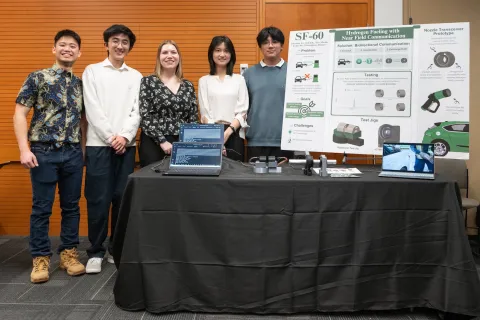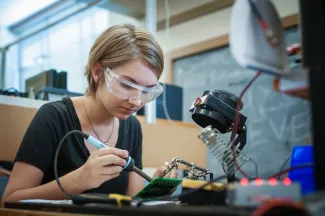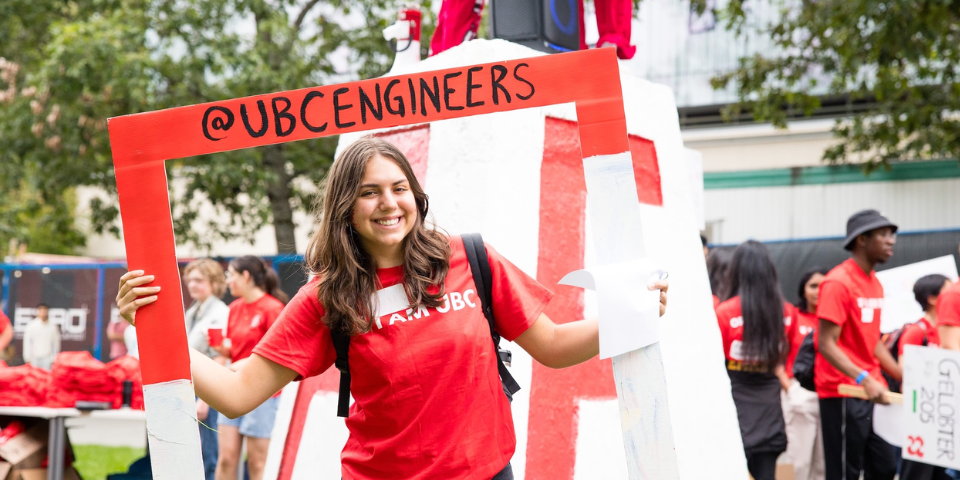
Christophorus Hansen, Frank Jin, Josh Lim, Alex Martin and Cheyenne Tu
- Community Partner: IRDI System
- Degree:
- Bachelor of Applied Science
- Program:
- Campus: Vancouver
Our project
Our client, IRDI System, designs and develops components for the hydrogen fuel cell market, including the equipment used to fuel hydrogen-powered vehicles. Currently during refueling, only the vehicle is able to send fueling data to the station, but the station is unable to send any information (such as temperature and pressure) back to the vehicle.
We were asked to develop a prototype solution for wireless bidirectional communication through a hydrogen fueling nozzle.
This technology could offer advantages over current unidirectional communication protocols by improving fueling times and efficiency – ultimately helping to reduce a barrier to the growth of the hydrogen-powered vehicle market.
The challenges we faced
There are no comparable existing applications, which made this project both challenging and rewarding. We started with the hydrogen fueling valve reference and some general NFC design references. This meant we had to acquire a lot of knowledge in a short time. We took the initiative to build up our technical knowledge and apply it to a practical real-world solution.
The hardware design – and subsequent assembly – was a significant challenge. It seemed almost impossible at times to fit all the components into the tight space of the housing.
What we’re most proud of
We each brought very different skills and prior knowledge to this project. Everyone took responsibility and accountability for their area of focus, yet we all knew we could rely on our teammates to provide feedback and help us when needed. During the integration stage, we worked together by sharing ideas, troubleshooting challenges, and combining our efforts to drive the project forward.





